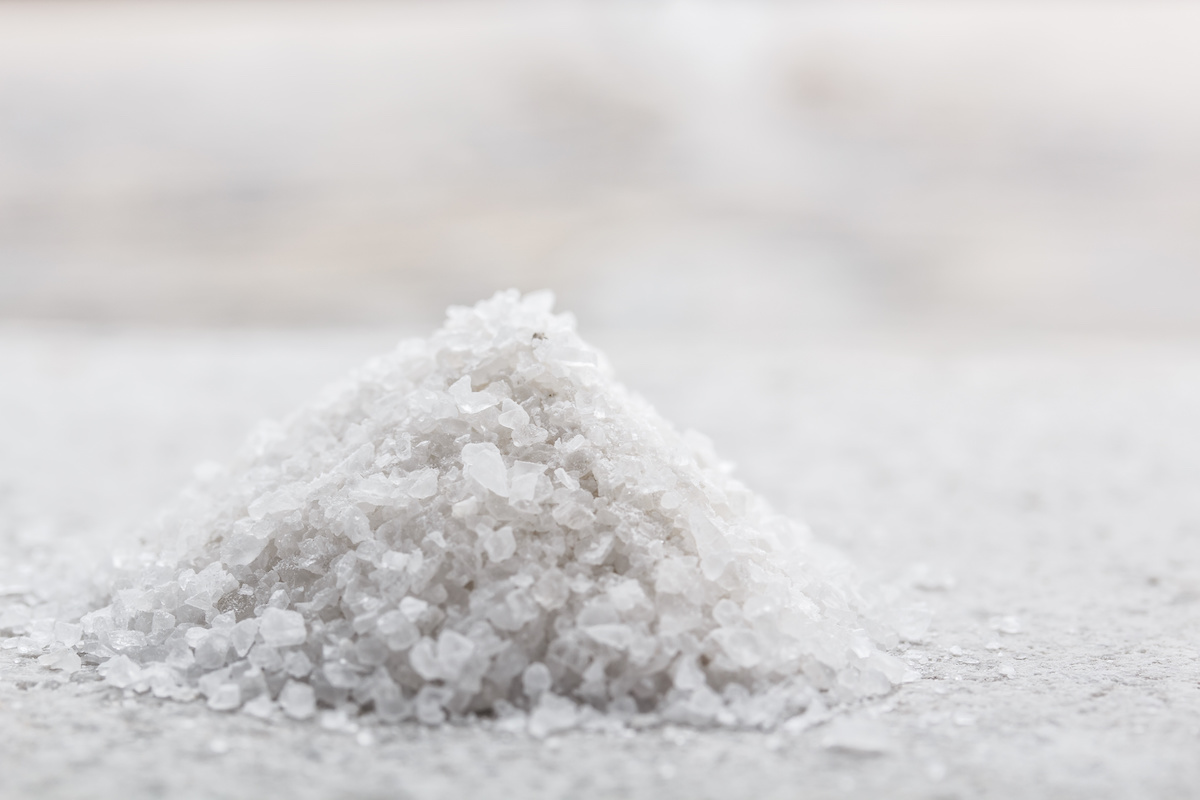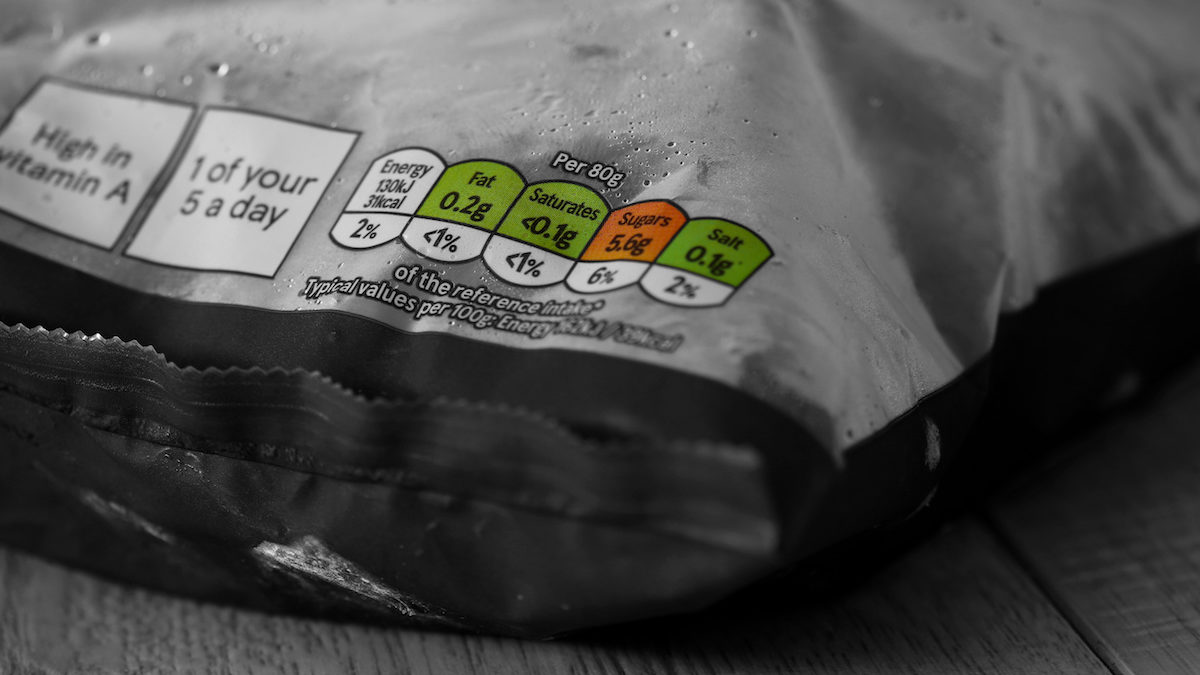What We Really Mean When We Talk About Salt

Last week we published an article on the DASH diet which attracted a few interesting comments and questions from our readers, especially around the topic of salt. We thought then it would be useful to clear some of these queries up and provide a synopsis on the role of salt on our health.
Firstly, when we talk about salt, we are referring to the compound sodium chloride (NaCl), but more accurately we are concerned with the specific effect of sodium, an important electrolyte in the body found mainly in extracellular fluid, like blood and interstitial fluid, in contrast to potassium which is found almost exclusively inside of cells.
We spend a considerable amount of energy “pumping” sodium out, and potassium into cells to maintain this difference, as this is physiologically crucial. It is important to understand some fundamental physiology to appreciate the impact of having too much or too little sodium.
The concentration (amount per volume of liquid) of sodium of the blood (and interstitial fluid) directly effects the osmolarity of the blood which in turn will dictate the movement of fluid. Any of you who have heard of osmosis may know that water will always move from a dilute to a more concentrated solution, or in other words, move to an area of high sodium concentration.
However, it is key to control the movement of fluid in and out of cells and to use osmolarity to maintain blood volume, therefore, the levels of sodium in the blood are very closely monitored and controlled. This is facilitated by the kidneys where you can increase the retention of sodium or allow more to be lost in the urine. However, sodium levels in the blood are also, obviously, a consequence of how much sodium you consume.
Salt And Blood Pressure
Blood pressure is influenced by two main things, the blood volume, and the contraction (vasoconstriction) and relaxation (vasodilation) of the artery walls. Eating too much sodium can independently influence both.
Firstly, a higher intake of sodium can directly increase blood osmolarity, draw more water, and consequently, increase blood volume, leading to an increase in blood pressure. This may be a transitory effect as your sodium and water balance mechanisms in the body will eventually rebalance this through increased excretion in the urine.

The second effect of high sodium, however, is it disrupts the balance of electrolytes and the operation of ion pumps mentioned earlier. Specifically, the pumps used by smooth muscle cells lining the artery walls. Too high a sodium relative to potassium will disrupt the main sodium-potassium ATPase pump, leading to a reliance on the different sodium-calcium pump to get rid of the sodium.
This in turn artificially increases levels of calcium inside the sarcoplasm of the smooth muscle and causes more muscle contraction. Hence we get more vasoconstriction — the narrowing of arteries — contributing to increased blood pressure.
The summary of all this is that dietary sodium is directly linked to blood pressure, such that increased sodium leads to increased blood pressure and vice versa. In contrast, potassium can be seen to have the opposite dietary effect, so higher potassium, lower blood pressure.
This physiological link is so established that sodium and potassium are probably the only nutrients that have been shown to have clear dose-response effects. Several studies have demonstrated that increasing sodium intake leads to corresponding increases in blood pressure, which then reduce again following sodium intake reduction. Moreover, this effect is universal, irrespective of age, gender, ethnicity, other dietary factors, or the presence of hypertension in the first place.
The War Against Salt
This has important wider ramifications given that higher blood pressure is a direct and powerful risk factor for cardiovascular disease. It has been postulated that given the impact sodium has on blood pressure and by association cardiovascular disease, that public health initiatives to reduce sodium intake within a population can have a huge impact on mortality and could be potentially more impactful on public health than smoking. But we have known all this for some time, culminating in a landmark collection of evidence undertaken in the early 1990s.
The upshot is we have had the same target to reduce population salt intakes to 6g per day for the last 30 years. Yet salt intake has remained stubbornly high at around 9g per day for most of this period. Currently, it stands at around 7.5g but has only really started to come down in the last five years.

Why is this? Well, it comes down to where we get our dietary sodium from, with 80 percent of our intake coming from sodium already present in the foods we buy, not salt we add ourselves. Attempts to change behaviour have had minimal impact on population intakes, sadly, and it has only been since the government has partnered with food manufacturers, retailers, and food outlets, that salt intake has declined.
This so-called ‘responsibility deal’ has led to a gradual reformulation of foods to slowly reduce salt content and is a genuine success story. This illustration of impact is now being used as template for other changes, particularly around sugar intake.
Other Strategies Related To Salt And Health
As eluded to in the piece around the DASH diet, other dietary aspects also impact blood pressure and cardiovascular disease independently. One of those aspects is increasing potassium intake, relative to sodium intake. Given that most of our dietary potassium comes from fruit and vegetables, this highlights the importance of these food groups in the diet, and indeed these are key features of the DASH diet, as well as most consensus recommendations on healthy intake.
Here, again, there are some positive signs that fruit and vegetable intake in the UK has increased over the last 10 years, in part influenced by public health messages such as getting your five-a-day. However, it is rising from a low base, and currently still falls below an average of four a day equivalent for UK adults, and even less in children at around three.
Salt substitutes and other salt alternatives have also started to be used more widely. Some of these are by manufacturers to retain the taste of products while reducing the sodium content specifically. An example is to use salts which are a combination of sodium chloride (NaCl) and potassium chloride (KCl).
Substituting NaCl with some KCl has been shown to reduce blood pressure, although the magnitude of this reduction may not be big. Some people believe some salt is better than others, for example, sea salt compared to normal table salt. However, the sodium content of sea salt is the same as table salt, the difference is that sea salt has larger crystals so you can fit less on a spoon — hence why you may end up eating less.
It could, however, contain slightly more other minerals such as magnesium, calcium, and potassium. Moreover, you could argue that consuming some salt can be beneficial for other reasons. The use of iodized salt in the diet is a very effective way of increasing iodine intake for example, which can be low for some people on a vegan diet.
But let us not forget that most of our salt intake is coming from salt in food already, such as processed foods. Salt is an important part of the palatability of many foods, which makes it easier to overeat in the first place, while they’re also likely to come with other less favourable attributes like high-fat content. Reducing intake of these foods then is what is likely to have the biggest global impact on our health.


















